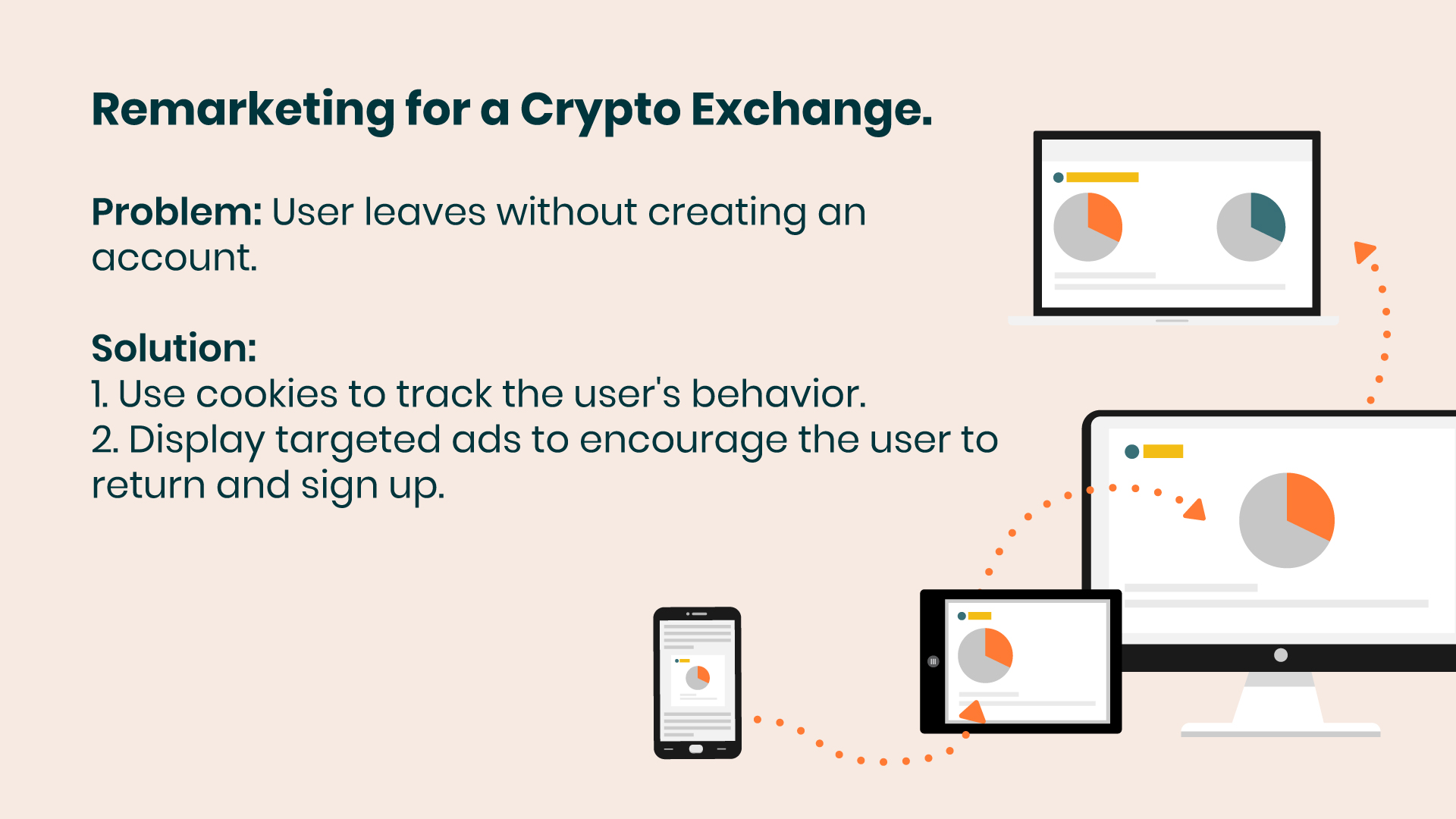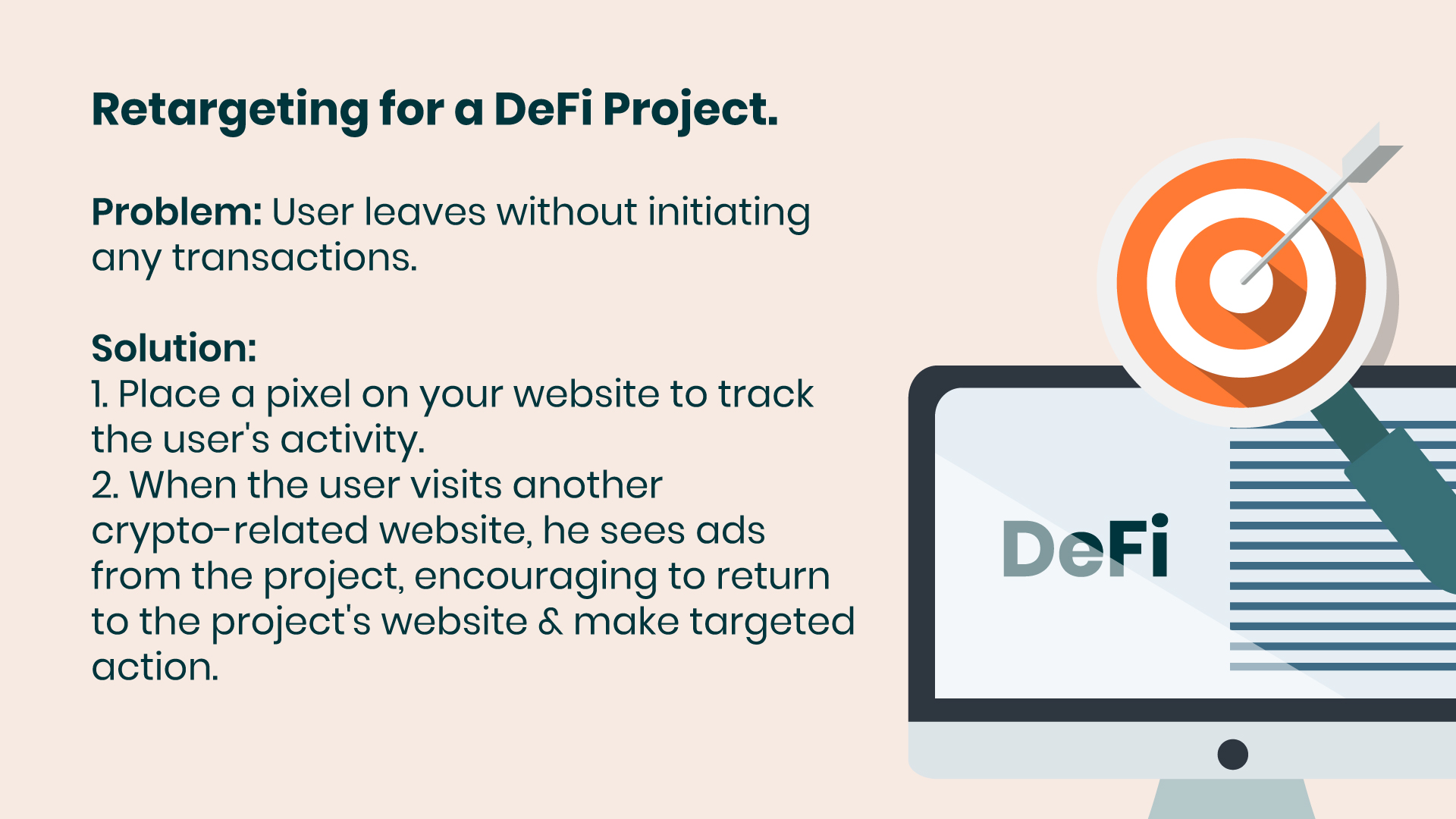In the world of digital marketing, two terms that often surface are remarketing and retargeting. These strategies have gained significant popularity due to their ability to reach potential custom-ers who have previously shown interest in a brand or its products. While remarketing and retar-geting are often used interchangeably, they do have distinct meanings and approaches.
Cointraffic assists crypto projects in garnering greater brand exposure and generating potential leads. Our Banner Ads provide an ideal avenue to capture the attention of your desired audience on premier crypto websites.
What is Remarketing?
Remarketing is a marketing strategy that involves reconnecting with individuals who have previously engaged with a brand's website, app, or other digital properties. It primarily relies on cookies, which are small text files stored in a user's browser, to track and identify these individuals.
When someone visits a website, a cookie is placed in their browser, allowing the website to re-member their actions and preferences. Remarketing leverages this information to deliver targeted ads to these users across various platforms, such as search engines, social media platforms, and display networks.
The purpose of remarketing is to keep a brand or its products at the forefront of potential customers' minds. By presenting relevant ads to individuals who have already interacted with the brand, remarketing aims to increase brand awareness, nurture leads, and ultimately drive conversions. For example, a user who added items to their shopping cart but did not complete the purchase may be targeted with ads showcasing those exact products or offering discounts to encourage them to return and complete the transaction.
What is Retargeting?
Retargeting, on the other hand, is a subset of remarketing and focuses specifically on serving ads to users who have previously visited a brand's website or exhibited specific actions. Unlike remarketing, retargeting goes beyond a brand's digital properties and extends its reach to third-party websites and platforms through ad networks.
Retargeting works by placing a pixel or code snippet on a website, which allows the brand to anonymously track the browsing behavior of its website visitors. Based on this information, targeted ads can be displayed to these users when they visit other websites within the ad network. For instance, if a user viewed a particular product page on an e-commerce website and then navigated away, they might encounter ads featuring the same or related products on news web-sites, blogs, or social media platforms they subsequently visit.
Retargeting aims to re-engage potential customers, reminding them of their initial interest and encouraging them to return to the brand's website to make a purchase or take a desired action. By strategically positioning relevant ads across different websites, retargeting reinforces brand messaging and increases the likelihood of conversions.
The Difference Between Remarketing and Retargeting.
While remarketing and retargeting share similarities, their differences lie in the scope of their reach and the platforms they utilize. Remarketing primarily focuses on reconnecting with users through owned digital properties, such as a brand's website or app, and leverages first-party data collected via cookies.
Retargeting, on the other hand, extends beyond owned properties and employs third-party ad networks to display ads on various websites that the user subse-quently visits. This makes retargeting a broader and more expansive approach than remarketing.
Furthermore, remarketing tends to be more versatile as it allows for personalized and tailored ads based on specific user behavior or preferences. It can encompass various forms of digital advertising, including search ads, display ads, and social media ads. Retargeting, while also personalized to some extent, is primarily display-based and relies on visual ads to catch the user's attention across different websites.
In the context of cryptocurrency projects, remarketing and retargeting can be applied as follows:
Remarketing for a Crypto Exchange
Suppose a user visits a cryptocurrency exchange platform and explores various trading options, but they leave without creating an account. Through remarketing, the exchange can use cookies to track the user's behavior and subsequently display targeted ads on social media platforms, search engines, or other websites they visit. These ads may highlight the benefits of joining the exchange, such as low fees, a wide range of cryptocurrencies, and a user-friendly interface, to encourage the user to return and sign up.

Retargeting for a Decentralized Finance (DeFi) Project
Imagine a user visits a DeFi project's website and shows interest in their lending and borrowing services. They explore different loan options but leave without initiating any transactions. Through retargeting, the DeFi project can place a pixel on their website to track the user's activity.
Later, when the user visits a cryptocurrency news website or a DeFi-specific forum, they might encoun-ter ads from the project highlighting the benefits of their lending platform, such as competitive interest rates and secure protocols. These ads aim to remind the user of their initial interest and encourage them to return to the project's website to start borrowing or lending.

Conclusion
These examples demonstrate how remarketing and retargeting can be applied to cryptocurrency projects to engage potential users and drive conversions. Remarketing focuses on reconnecting with individuals who have interacted with a crypto platform, while retargeting narrows down the targeting to users who have shown specific actions or interests. By leveraging these strategies effectively, cryptocurrency projects can increase brand visibility, attract more users, and pro-mote their unique features and offerings.
